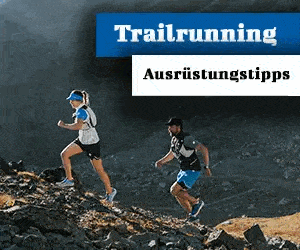The summer season is drawing to a close. Climbing finches, ropes and carabiners wander into the cellar during the days. So that there are no nasty surprises next year, we'll show you how to properly clean and store your equipment - with practical tips from professionals Katherine Choong and Roger Schäli.
A contribution by Fabian Reichle - Bächli Bergsport
Anticipation, winter is just around the corner. While overzealous people rummage their skis out of the cellar in autumn, apply fresh wax and give the edges a fresh finish, some people forget to stow away their summer mountain sports equipment properly. Peppering the wet climbing rope curled up with the muddy mountain boots in the damp garage in the corner where the old car battery is located is a very bad idea.
Equipment for mountain sports is robust, but is usually made of high-tech materials that can be prone to damage.
Equipment for mountain sports is robust, but is usually made of high-tech materials that can be prone to damage. But apparently simple objects such as ice ax, crampons and the like, thank you with a longer lifespan if stored properly. The reasons for a clean storage of safety-relevant equipment should also hopefully be logical.
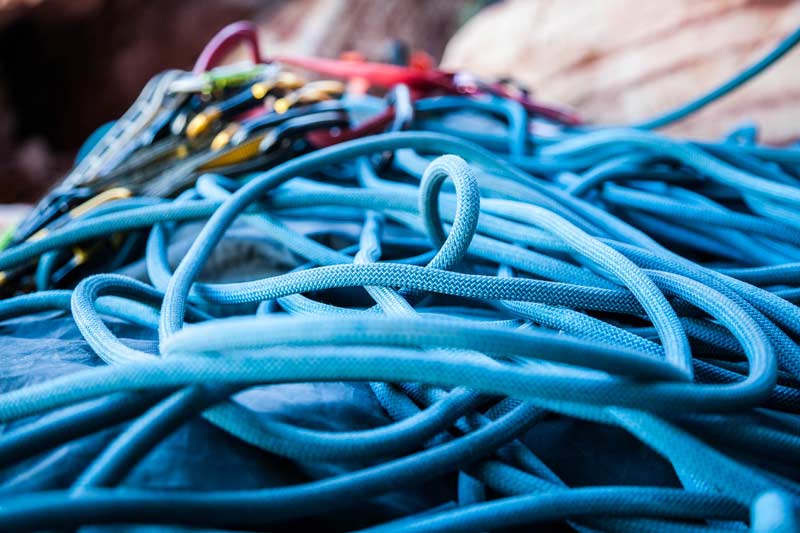
Store climbing ropes loosely
Ideally, you should stow your climbing rope in a designated one ropebag. You can put your rope loosely in this, which allows it to return to its natural original shape and prevents unsightly kinks. The sack offers optimal protection and should actually be sufficient, Katherine Choong goes one step further: "Sometimes I put a mat under the rope sack to have even more protection."
Alternatively, you can shoot your rope neatly in loop form, which saves space and is handy. Basically you have to store your rope in a dark, cool and dry place - away from direct (solar) radiation, chemicals, heat and mechanical influences. The dead weight of the rope can also cause damage in the long term, so don't hang it on a loop, but lay it flat. Incidentally, permanent storage in a trunk is a no-go. The temperature fluctuations in it are poison for your rope.
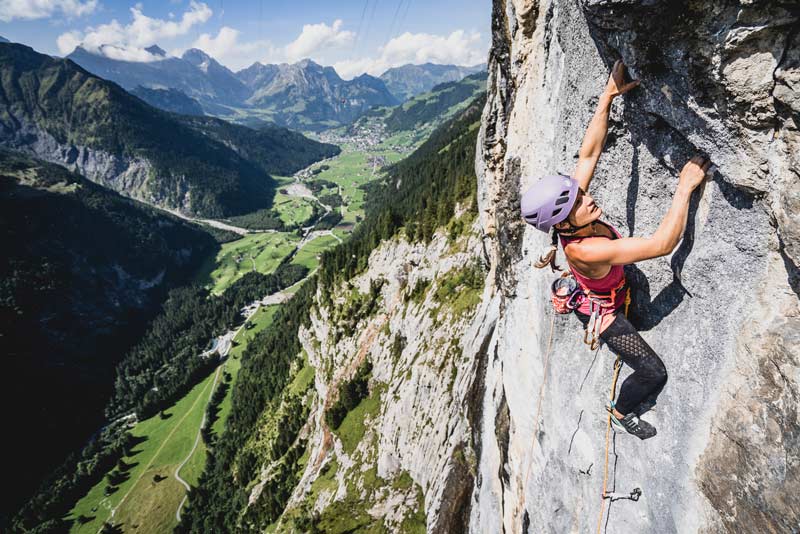
Before the rope is stowed away at all, you have to check it thoroughly and clean it if necessary. It starts with an optical inspection. See if there is any obvious damage to the coat and run it through your hands to feel any deformations. Obviously defective ropes do not belong in the warehouse - it is best to bring them straight to the nearest Bächli branch for recycling.
If your rope is dirty, you can wash it without a guilty conscience. A gentle hand wash in the bathtub with lukewarm water and mild synthetic detergent brings a new shine. Under no circumstances hang up to dry or lay in the blazing sun. Lay it out openly in a dark, cool place.
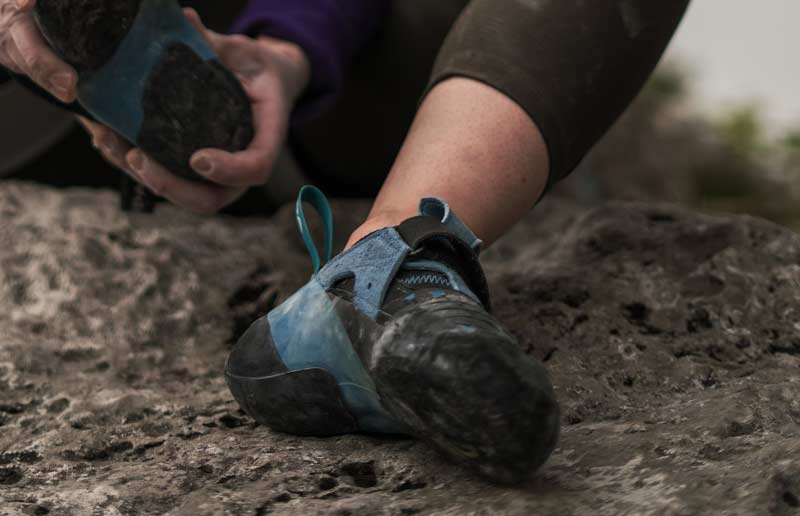
Store shoes as dry and cool as possible
Moisture and heat. It is important to avoid these two factors. Especially with leather shoes, you have to make sure that the organic material does not suffer. If it is too damp, leather can become infected with mold; temperatures that are too high make it porous. In addition, the latter promotes the fact that adhesives become detached from soles.
Especially with leather shoes, you have to make sure that the organic material does not suffer. If it is too damp, leather can be attacked by mold; temperatures that are too high make it porous.
Before hibernating, treat your shoes to an extensive care program. That means: clean with lukewarm water and a brush, clean the inner lining with a sponge. Then let your shoes dry at room temperature, the inside can be stuffed with absorbent newspaper. Are the shoes still slightly damp impregnated Ye. Make sure that you do not use any greasy impregnation on leather models, as this will cause the leather to swell. You can keep rubber areas supple with the appropriate care material. Tip: There are suitable funds for this from the automotive industry.
Climbing shoes in particular tend to have bad smells over time. An old household trick helps - just treat the inside with baking soda.
You can keep your shoes in shape with a wooden tensioner. So you can store them through the winter.
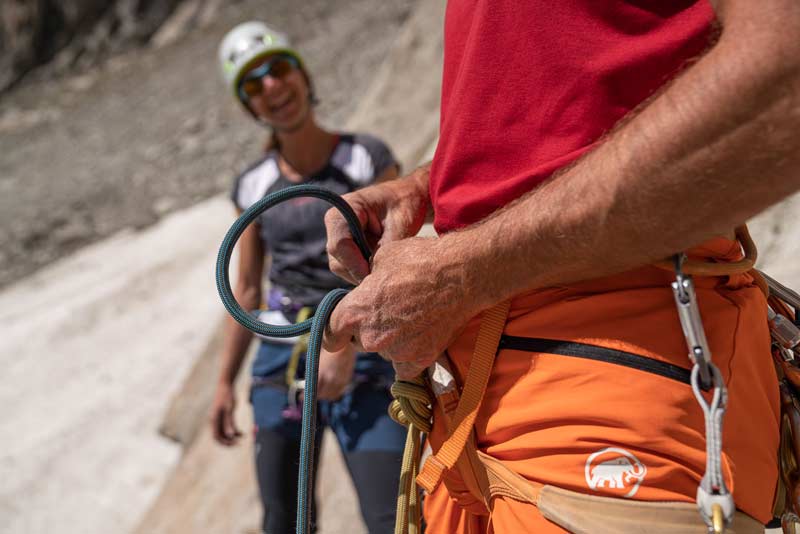
Inspect climbing harnesses for damage
Here it is similar to the rope. Before you send your harness into the winter break, inspect it for open seams, tears and the like. Apparently normal signs of wear can also become critical. “I always check the places the rope runs through. These shouldn't be too worn, ”explains Katherine Choong.
“I always check the places the rope runs through. These should not be too worn out »
Katherine Choong
If you discover any damage, the belt should be disposed of. In any case, consistent action applies in the event of damage. Roger Schäli's trick: “I make sure that I cut up material with errors and throw it away immediately. Not that I am tempted to reuse dubious equipment in the stress of packing. " However, if everything is okay, you start to mess with the dust and dirt.
“I make sure that I immediately cut up material with errors and discard it. Not that I am tempted to reuse dubious equipment in the stress of packing. "
Roger Schäli
You can remove this with a gentle brush. Then you can wash your climbing harness without hesitation. Delicates cycle, 30 degrees, without spinning. It's best to put it in an old pillowcase for washing. Don't use detergent.
After that, the belt, like the other pieces of equipment, belongs in a dry, dark, cool place.
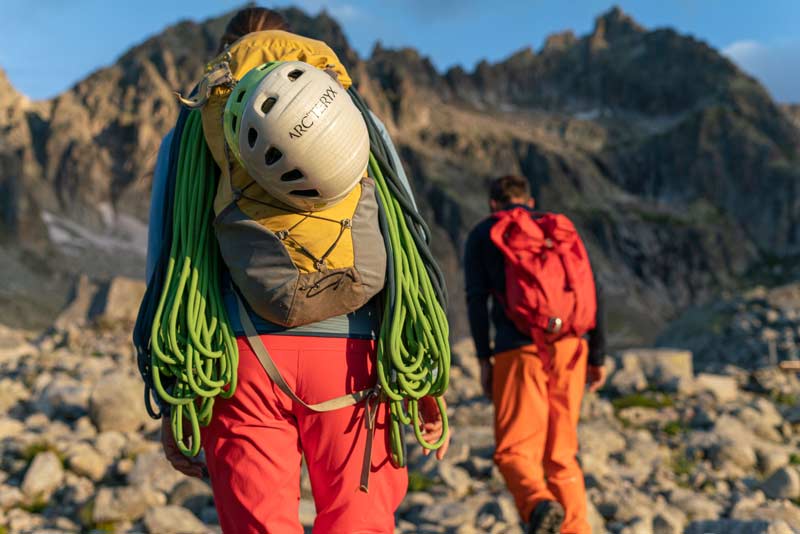
Helmets: avoid permanent stress
Helmets are relatively easy to use. You clean the surface with a cloth and a little alcohol, you wash the inner parts of textile like your climbing harness, although you can use detergent. Make sure, however, that this is pH-neutral. Aggressive cleaning agents can attack the synthetic fibers.
When storing, you should make sure that you do not put anything on the helmet. Even if it is basically stable, it is not designed for permanent loads.
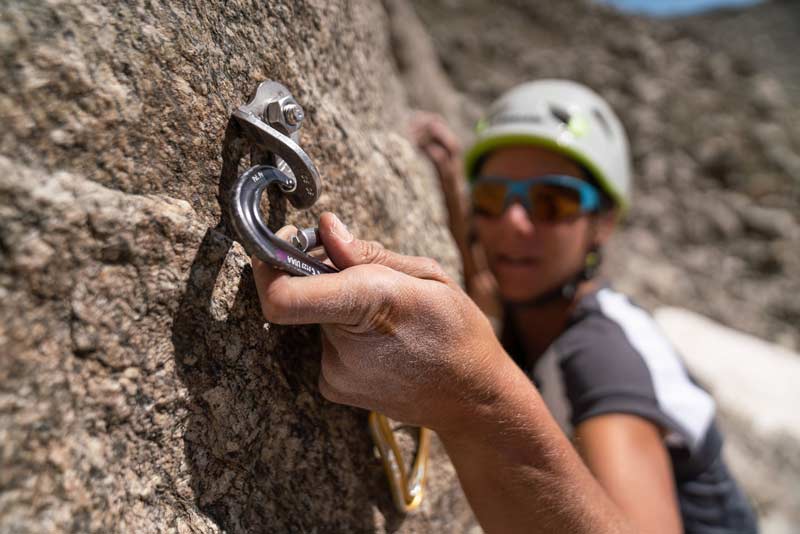
Metal equipment: Cleaning and greasing
You treat carabiners, quickdraws, belay devices and the like with a brush. If this is not enough, you can use warm water. Avoid using grease-dissolving cleaners, as these dissolve the grease and damage seals.
With material that is connected to textiles - for example quickdraws or via ferrata sets - you can also counteract dirty areas with just water. Roger Schäli knows how best to take care of mobile backups: “I blow out friends and Camalots with a little air pressure to get them clean. I care for the latter with specially designed oil. "
“I blow friends and Camalots out with a little air pressure to get them clean. I care for the latter with specially designed oil. "
Roger Schäli
If joints no longer run smoothly and become clumsy, you can apply neutral grease and remove excess with a dry cloth. Please never reach for the WD40 can, because as fabulous as it works on hinges in everyday life, it is just as harmful for sensitive mountain sports equipment. The lubricant is too aggressive and dries out certain parts, which even accelerates wear and tear.
Clothing: The right remedy for technical membranes
In the case of trousers, shirts and jackets, only the care instructions are actually relevant - how you put them in the closet should hopefully be self-explanatory.
Technical membranes such as GoreTex cannot simply be thrown into the washing machine. Avoid using bleach and fabric softener - it is best to leave your regular detergent aside and use it special funds for membrane clothing. You don't have to compromise on the number of washes. “I wash my GoreTex clothes once or twice a season,” says Roger Schäli. This actually helps the membranes to function properly.
There is also a special detergent for your down jacket (and your sleeping bag) - use this one. You can freshen up down in the dryer. Simply set it to the lowest temperature and spin for a maximum of 20 minutes. Put a couple of tennis balls in the drum to make sure that the down is fluffed up again.
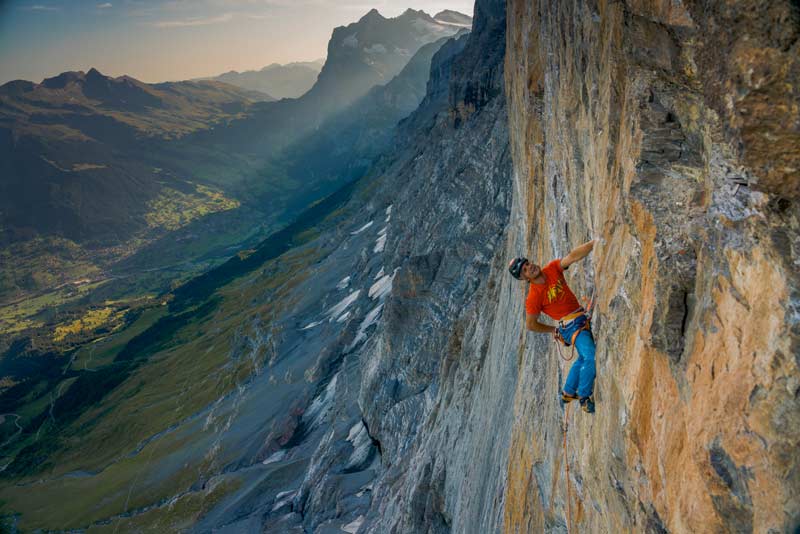
Us else?
Order is half of life. Honoring all of the tips for correct storage, if you scatter your material all over the place and find nothing in the coming season, it tarnishes the effort. So think about how you want to sort and store your equipment.
Clothes are probably best kept in a lockable closet, while shoes make a neat trap on an appropriate shelf. Small items can be stowed in boxes - if you are multisport in the mountains, you can even separate according to discipline. Or you can orientate yourself on the intended use: In the securing box there are quickdraws, friends, wedges and securing devices.
In the end, you will have to find a system that works for you. There is no right or wrong. For example, Katherine Choong has her own method: "I try to sort the material by type and, if possible, by age so that I know which ropes are the latest."
Freshly cared for, stored properly and tidily: You can look forward to the next summer season now. You can find more tips on material care on the Website of Bächli Bergsport.
That might interest you
- Yoga series for climbers: With this exercise you stretch your neck muscles
- Warmth for cool autumn days on the rock: the Atom LT Hoody from Arc'teryx
- A lot of love for details: Bluebird all-round ax from Blue Ice
+ + +
Credits: picture and text Bächli Bergsport


